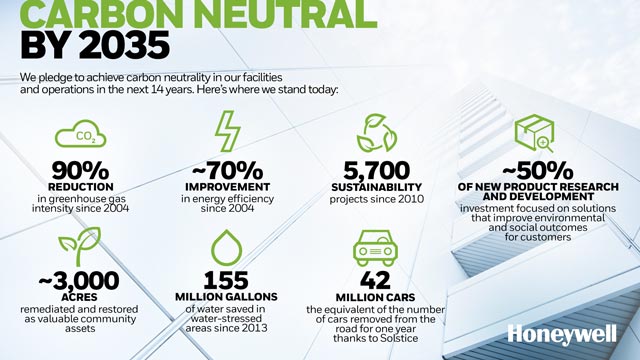
Honeywell, whose products include control technologies for buildings and industry, has announced its commitment to become carbon neutral in its operations and facilities by 2035. It will achieve the goal through a combination of investment in energy savings projects, conversion to renewable energy sources, completion of capital improvement projects at its sites and in its fleet of company vehicles, and the use of credible carbon credits.
The initiative represents a continuation of the company’s sustainability efforts since 2004, which have already reduced greenhouse gas emissions from its operations and plants by 90%.
Honeywell’s reductions will be reported publicly and verified by a third party pursuant to the Greenhouse Gas Protocol. The company’s efforts will result in carbon-neutral operations and facilities with regard to direct emissions (“Scope 1”) and indirect emissions from electricity and steam (“Scope 2”). In addition, the company is committed to addressing “Scope 3” indirect emissions, which include emissions in the supply chain, by improving its existing tracking system and forming partnerships with industry leaders to identify and introduce best practice, as well as encouraging customers to adopt Honeywell’s climate solutions and products.
Honeywell claims a long track record of meeting demanding sustainability targets. In addition to significantly reducing its greenhouse gas intensity, it has put into effect more than 5,700 sustainability projects since 2010, saving an annualised $100m in costs.
In 2019, Honeywell set a new “10-10-10” target to reduce global Scope 1 and Scope 2 greenhouse gas emissions intensity by an additional 10% from 2018 levels, deploy at least 10 renewable energy opportunities, and achieve certification to ISO’s 50001 Energy Management Standard at 10 facilities by 2024. The company is on track to meet these commitments.
The company says that about half its investment in new product R&D is directed towards products that improve environmental and social outcomes for customers. These include the Solstice line of low-global-warming-potential refrigerants. It is also investing in energy storage solutions such as flow batteries that allow surplus wind and solar power to be stored until needed.

